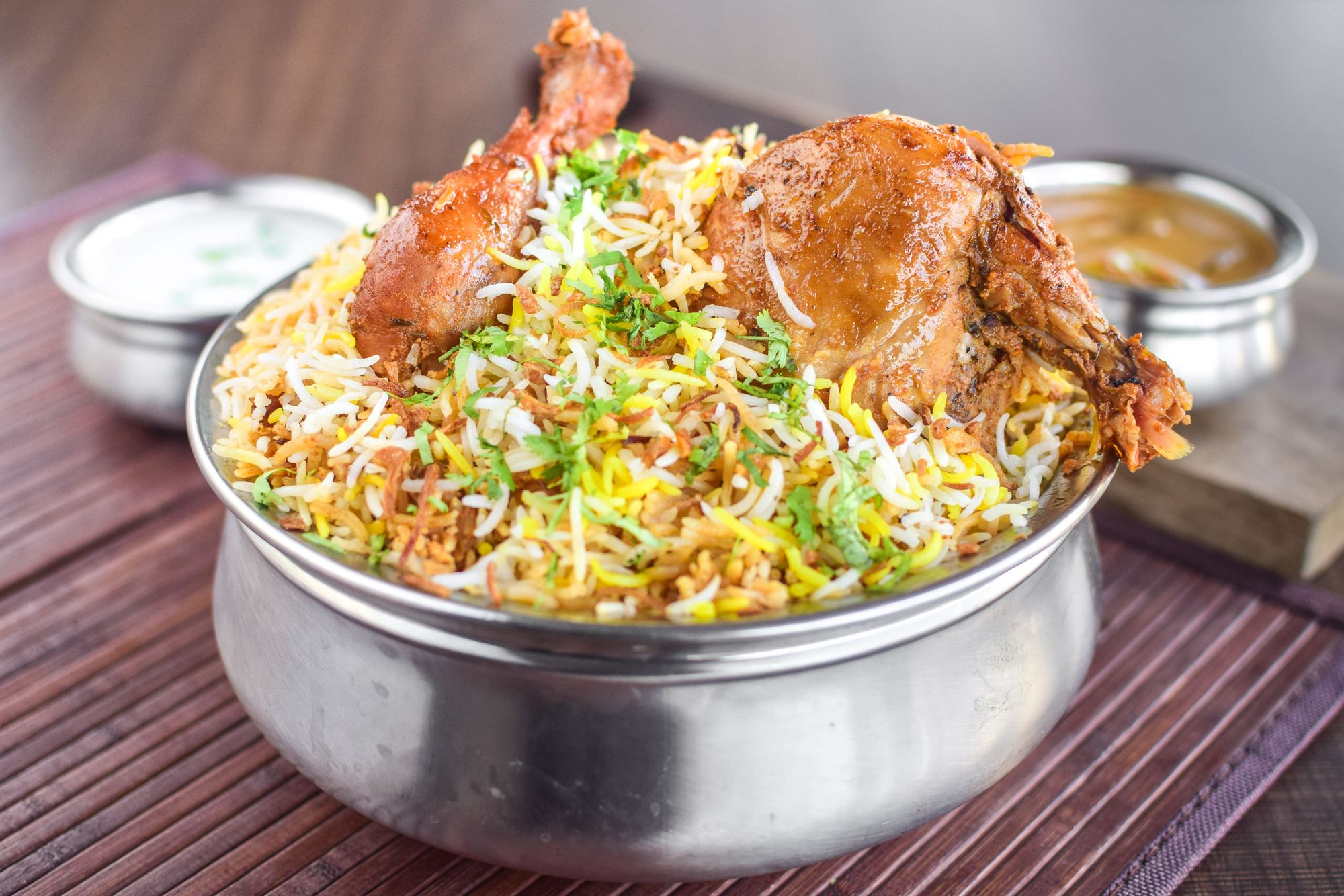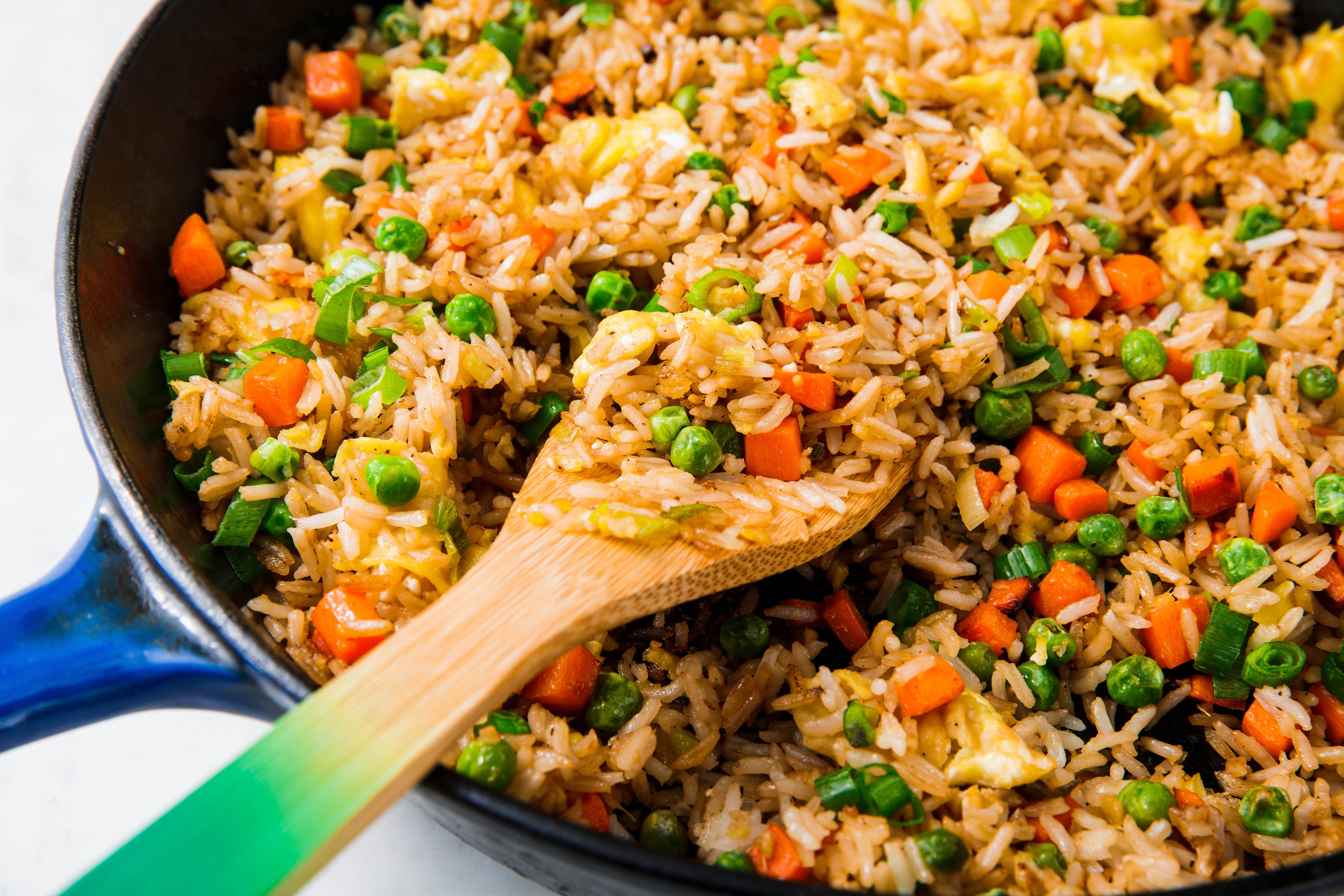FOODS
BIRIYANI



Although the cultivation of rice had spread much earlier from South Asia to Central and West Asia, it was at the time of the Abbasid Caliphate that methods of cooking rice which approximate modern styles of cooking pilaf at first spread through a vast territory from Spain to Afghanistan, and eventually to a wider world. The Spanish paella,[5][note 8] and the South Asian pilau or pulao,[6][note 9] and biryani,[7][note 10] evolved from such dishes. According to author K. T. Achaya, the Indian epic Mahabharata mentions an instance of rice and meat cooked together. Also, according to Achaya, "pulao" or "pallao" is used to refer to a rice dish in ancient Sanskrit works such as the Yājñavalkya Smṛti.[15] However, according to food writers Colleen Taylor Sen and Charles Perry, and social theorist Ashis Nandy, these references do not substantially correlate to the commonly used meaning and history implied in pilafs, which appear in Indian accounts after the medieval Central Asian conquests.[16][17][18] Similarly Alexander the Great and his army, many centuries earlier, in the 4th century BCE, have been reported to be so impressed with Bactrian and Sogdian pilavs that his soldiers brought the recipes back to Macedonia when they returned.[19] Similar stories exist of Alexander introducing pilaf to Samarkand; however, they are considered apocryphal by art historian John Boardman.[20] Similarly, it has been reported that pilaf was consumed in the Byzantine Empire and in the Republic of Venice.[21] The earliest documented recipe for pilaf comes from the tenth-century Persian scholar Avicenna (Ibn Sīnā), who in his books on medical sciences dedicated a whole section to preparing various dishes, including several types of pilaf. In doing so, he described the advantages and disadvantages of every item used for preparing the dish. Accordingly, Persians consider Ibn Sina to be the "father" of modern pilaf.[19] Thirteenth-century Arab texts describe the consistency of pilaf that the grains should be plump and somewhat firm to resemble peppercorns with no mushiness, and each grain should be separate with no clumping.[22] Another primary source for pilaf dishes comes from the 17th-century Iranian philosopher Molla Sadra.[23] Pilau became standard fare in the Middle East and Transcaucasia over the years with variations and innovations by the Persians, Arabs, Turks, and Armenians. During the period of the Soviet Union, the Central Asian versions of the dish spread throughout all Soviet republics, becoming a part of the common Soviet cuisine. Preparation Some cooks prefer to use basmati rice because it is easier to prepare a pilaf where the grains stay "light, fluffy and separate" with this type of rice. However, other types of long-grain rice are also used. The rice is rinsed thoroughly before use to remove the surface starch. Pilaf can be cooked in water or stock. Common additions include fried onions and fragrant spices like cardamom, bay leaves and cinnamon.[22] Pilaf is usually made with meat or vegetables, but it can also be made plain which is called sade pilav in Turkish, chelo in Persian and ruzz mufalfal in Arabic.[24] On special occasions saffron may be used to give the rice a yellow color. Pilaf is often made by adding the rice to hot fat and stirring briefly before adding the cooking liquid. The fat used varies from recipe to recipe. Cooking methods vary with respect to details such as pre-soaking the rice and steaming after boiling
Curd rice, also called yogurt rice, is a dish originating from India. The word "curd" in Indian English refers to unsweetened probiotic yogurt. It is most popular in the South Indian states of Tamil Nadu, Kerala, Karnataka, Telangana and Andhra Pradesh; and also in West Indian states of Rajasthan, Gujarat and Maharashtra.[1][2][3] In the state of Rajasthan it is known as Auliya,[4] in Gujarat it is known as Ghens[5] and in Maharashtra it is known as dahi bhat. In the state of Tamil Nadu it is called thayir saadam or soru, in Kerala it is called tayire chōre and in Telangana and Andhra Pradesh it is called perugannam/daddojanam. In Karnataka, it is called mosaranna. The dish is a staple of traditional cuisine, with the untempered version present at the end of almost every Indian meal during summers. In the states of Rajasthan and Gujarat, curd rice varieties Auliya and Ghens are prepared on Shitala Saptami and Randhan Chhath festival. The tempered version is often served during formal occasions and also offered as prasadam (blessed food) to devotees in temples. Preparation While combining steamed white rice and yogurt is the simplest way to make it, more complex techniques can be utilized when necessary. Rice is prepared either via steaming or pressure cooking to be soft as in the South Indian style.[6] It is then allowed to cool to room temperature, after which it is seasoned with finely chopped green chillies, ginger, and curry leaves, and sometimes along with the tempering of black gram, mustard seeds, cumin seeds, and asafoetida. Finally, curd and salt are added.[1][2] Alternatively, it can be prepared by mashing cooked plain rice (mostly leftovers) with some salt, curd and (a little milk to lessen the sourness) garnishing it with fried urad dal, mustard seeds, green chilli and chopped coriander. Also, adding a few chopped onions in bigger slices will help the curd rice from fermenting too quickly.[1][2] In some areas, curd rice is served in a unique style where steamed rice is mixed with mild curd, salted and then tempered with mustard seeds, curry leaves, dry chillies and black gram. Garnishing varies with region, and ranges from grated carrots, pomegranate seeds, raisins, green and purple grapes, fried cashews to grated raw mango and boondi. It can be served lukewarm or chilled. Additional options include a pinch of powdered and roasted asafoetida.[1][2] Variations of the recipe are countless and are present in all states, reflecting the cuisine of each region. For example, in Karnataka, yogurt chillies (sandige menasu) are commonly added as part of the tempering. Regardless of this, the base components of rice, yogurt, tempered ingredients, and fresh ingredients are consistent, with the different ingredients included in each step varying. Serving